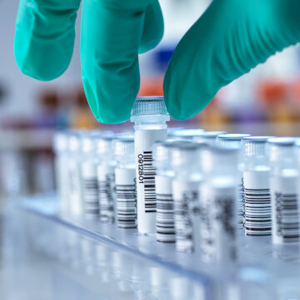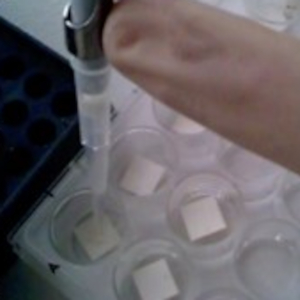
Polymerase Chain Reaction Expertise
PCR, or Polymerase Chain Reaction, is a revolutionary molecular biology technique that enables the exponential amplification of specific DNA segments. Developed in the 1980s, this method has revolutionized genetics and medical research, and enabled the development of numerous diagnostics.
Real-Time PCR
Real-time PCR or qPCR is a powerful variant of PCR. This technique not only amplifies, but also quantifies DNA during PCR, rather than at the end (conventional end-point PCR). Fluorescent reagents, such as SYBR Green DNA intercalating markers or TaqMan probes, emit fluorescence proportional to amplification. The amount of DNA can thus be measured in real time, enabling precise quantitative analysis. This is particularly valuable for measuring gene expression, viral load and other quantitative parameters.
Digital PCR

Digital PCR is a recent technological advance that enables the exact number of DNA molecules present in a sample to be counted. By partitioning the sample into thousands of small individual reactions, this method offers unrivalled precision in quantifying DNA copies.
Guidelines
When it comes to the use and publication of PCR results, there are standardized PCR guidelines: MIQE (Minimum Information for Publication of Quantitative Real-Time PCR Experiments).
Briefly, these PCR guidelines are essential for guaranteeing the quality, reproducibility and accuracy of molecular biology results. These guidelines define rigorous criteria for each stage of the PCR process, from experimental design to presentation of results. They emphasize aspects such as data standardization, primer validation, verification of reaction conditions, and complete documentation of experimental protocols.
By following these guidelines, researchers can be sure of conducting high-quality PCR experiments, thereby reinforcing the reliability of the data produced and fostering confidence in the results presented in the scientific literature. These recommendations are a fundamental pillar in promoting high standards in PCR research.
Reading PCR Results
Results can be read on agarose gel, or by colorimetric detection.
- Agarose gel: The agarose gel is a relevant traditional technique for visualizing DNA fragments. After PCR amplification, samples are separated on an agarose gel and subjected to electrophoresis. Fragments will migrate according to their size, enabling a rough estimate of the length of amplified products.
- Colorimetric detection: This method combines the specificity of PCR with the ease of colorimetric detection. Labeled probes are designed to hybridize specifically with the target sequence. If the sequence is present, the probe binds, generating a colored signal. This approach is particularly useful for detecting specific sequences without the need for electrophoresis.
PCR: an essential molecular biology technique
PCR is a fundamental and versatile molecular biology technique. Its impact on scientific, veterinary, agronomic, medical and related research is undeniable. PCR has undergone numerous innovations. Variants such as real-time PCR (qPCR) and digital PCR (dPCR) offer even more advanced capabilities, enabling finer analysis and more sensitive detection.
Understanding the basics of PCR is essential before embarking on studies in molecular biology or genetics. Each approach (PCR, qPCR, dPCR) has its own advantages and limitations. The choice of method depends on the specific objectives of the experiment, the resources available, and the sensitivity required. By understanding these different methods, researchers can maximize the relevance of their results to their needs.
How PCR works
PCR relies on a series of complex enzymatic reactions to produce millions of copies of a target DNA sequence. The process comprises three main stages: denaturation, hybridization and extension. During denaturation, the DNA is heated to separate its two strands. Next, small single-stranded DNA fragments specific to the target sequence are added, initiating the hybridization process. Finally, the polymerase enzyme synthesizes new DNA strands complementary to the target sequence from these priming sites. The process is repeated a large number of times (cycles) to exponentially generate millions of copies of the target sequence.
PCR Applications

PCR has a wide range of applications, from fundamental research to personalized medicine. In molecular genetics, it is used to detect and amplify specific genes, facilitating their study. In medical diagnostics, PCR is used, for example, to identify a genetic mutation in a genome or the presence of pathogenic agents such as viruses and bacteria, with high sensitivity and specificity.
PCR Teaching Kits
DIAG4ZOO provides 4 kits (HMT, PMT, AMT, GPMT) to facilitate PCR teaching. They are designed for training courses at universities, engineering schools and high schools.
These kits can be used to perform the following experiments:
- extraction and purification of nucleic acids and PCR amplification,
- analysis of nucleic fragments by electrophoresis,
- detection of target genes by membrane hybridization,
- search for nucleic acid sequences in a database.
DIAG4ZOO regularly upgrades its kits to keep laboratory technicians’ skills up to date and in step with field requirements. For instance, a new training module dedicated to qPCR is now available as an option.




